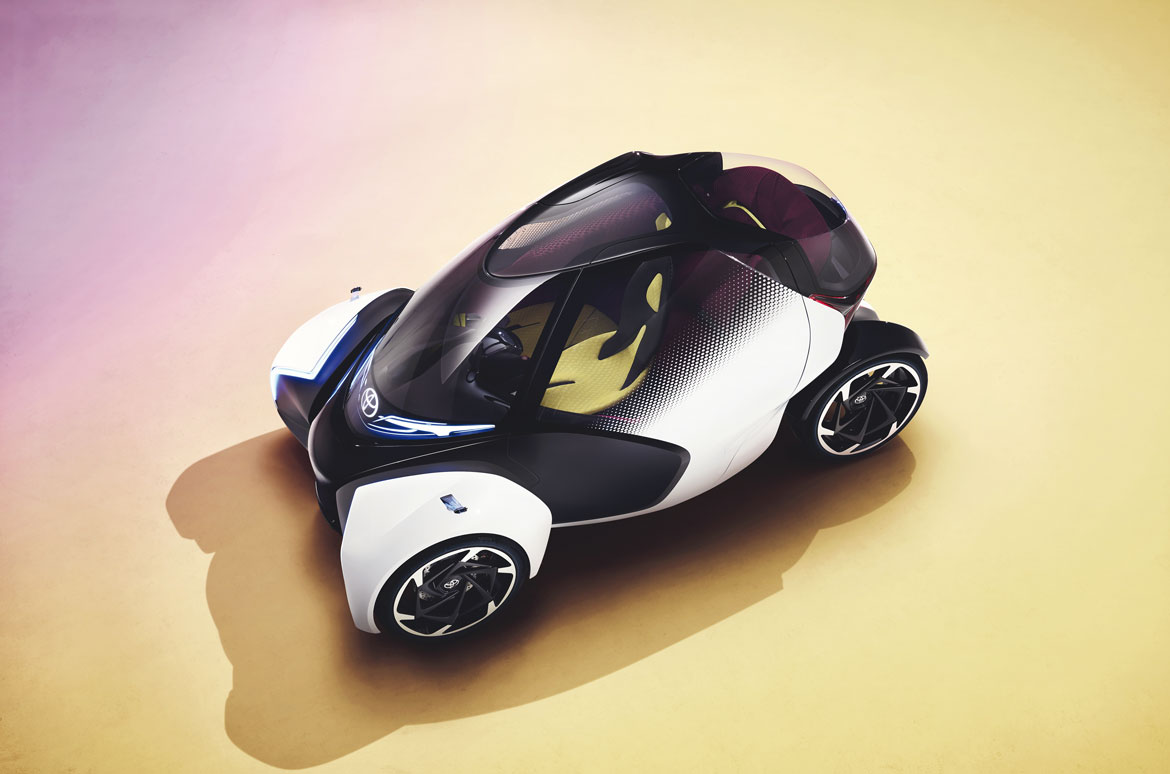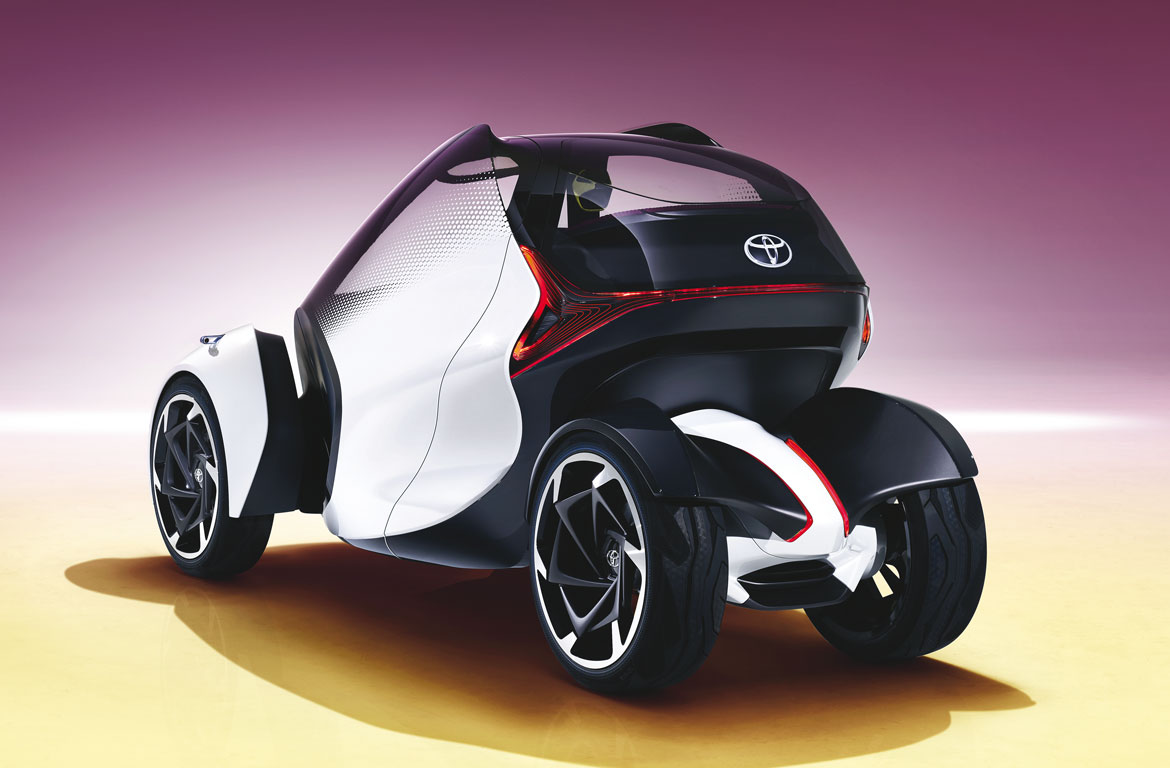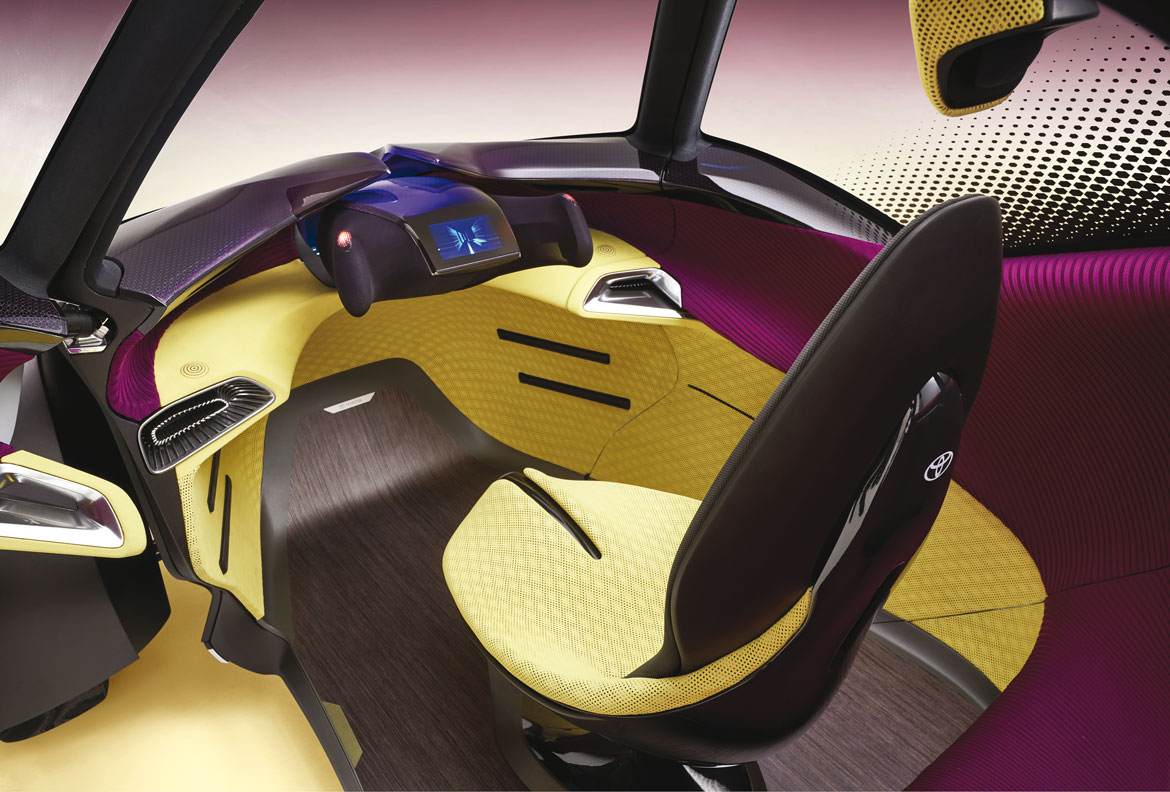Developed by Toyota Motors Europe (TME) in collaboration with the company’s ED² design studio in Nice, the new i-Tril Concept showcases numerous innovative aspects of Toyota’s research into ever better and more engaging environmentally- friendly mobility solutions.
Making its world debut at the 2017 Geneva motor show, and featuring Active Lean technology, the new i-Tril concept represents a viable alternative to A and B segment cars, other EV products, public transport and motorcycles.
Heralding a change in mindset for motorists, the i-Tril is designed to be more than a mere commodity. Driven by Akio Toyoda’s commitment to bring passion and driving pleasure to all future Toyota vehicles, it embraces the company’s Waku Doki (a Japanese term translating as ‘Beat of the Heart’) philosophy to demonstrate that future EVs can still stimulate the senses and set the pulse racing.
A different type of transport for those who still wish to have fun whilst driving even at slow speeds in the urban environment, it represents all the best elements of future mobility beyond mere eco-friendliness.
The i-Tril has been developed with a new type of customer in mind: a sophisticated, single, 30-50 year old active female with two children and a vibrant lifestyle. And she lives in a SMESTO (Small to Medium Sized TOwn)…
European Union studies on the future of cities have suggested that, rather than further expansion of already vast metropolitan areas such as London and Paris, the continent will witness a steady increase in growth of built-up areas adjacent to existing cities, in the manner of medium-density suburban pockets of deve-lopment.
The number of such SMESTOs in Europe is already significant, and their inhabitants travel extensively to take children to school, shop, visit restaurants and socialise. As such, their sometimes difficult, stop-start mobility requirements are for small, agile and urban-friendly vehicles.
Driven by electric motor power and weighing just 600 kg the i-TrilL is some 2,830 mm long and 1,460 mm high. It features 1,200 mm front and 600 mm rear track widths, with a hinge between the rear axle and cabin allowing the vehicle body and front tyres to lean whilst the motorised rear tyres remain perpendicular to the road surface at all times.
With the front wheels and fenders clearly separated from the main bodyshell to facilitate the leaning of both the former and the latter, the cabin consists of a smooth, dark, cocoon-like central mass with no belt-line or door handles.
This is visually overlaid with a surface wrapping which undergoes a seamless transition between the body colour it shares with the front wheel arches and the transparent cockpit glazing, whilst emphasising the powerful forward movement inherent in the i-Tril’s silhouette.
The butterfly-opening doors are hinged on the sloping A pillars to maximise the opening area and ease of cabin entry to even the rear seat passengers, whilst requiring no more opening room within a car parking space than conventional doors.
The robustness of the vehicle architecture and the added width of the rear cabin to accommodate a two-seat bench are reinforced from behind by the full-width combination lamp design above a clearly separate rear axle structure which incorporates the electric motor drive system.
With its One-plus-Two seating layout, the i-TRIL redefines interior space and spaciousness. Current interior design philosophy hinges on everything being built around the driver, with rear seat passengers very much regarded as second class citizens.














